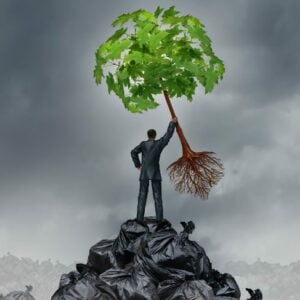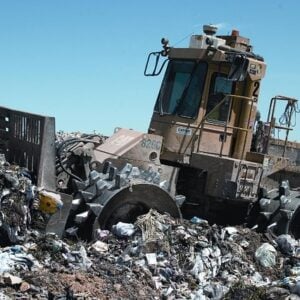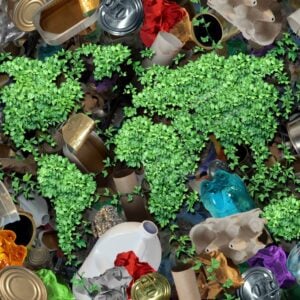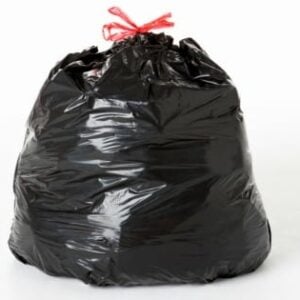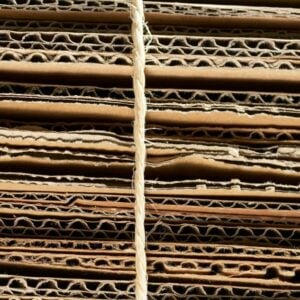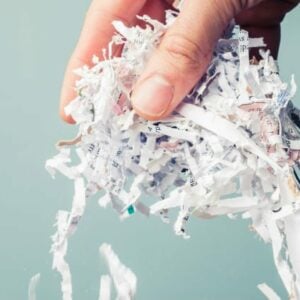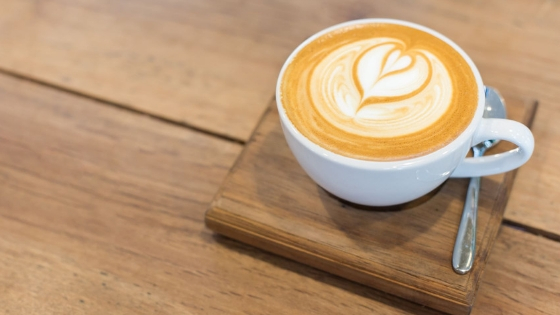
Cafe Waste Management: Is It Possible To Have A Zero-Waste Cafe? ☕
Cafe Waste Management ☕: If you are like me, you are incapable of doing any work until you have had a coffee. That is just how I value the power of coffee! Hold on, let me go drink one.
In any case, are you like me and seeking a zero-waste cafe? Or, are you one that at least seeks an environmentally friendly cafe to purchase your morning brew? Chances are, of course, you are!
>Download Now: Free PDF Business Owners Guide To Commingled Recycling Bin Services
Unsurprisingly nowadays, more and more people are looking for waste-free cafes, or at the very least, a coffee shop that takes some effort to produce as little waste as possible.
In this blog, we will cover some of the things that help cafes become zero-waste cafes: cafes with exceptional waste management practices.
Who is Waster?
Waster works with lots of small and medium Aussie businesses such as cafes, shops, restaurants, offices and other businesses to boost recycling, cut costs and improve flexibility.
We provide all your required waste and recycling services through cost-saving packages. So, you can be an environmentally friendly cafe. And, you can still save money!
Click on the blue button to learn more.
Can a Zero Waste Cafe succeed? What should they know about cafe waste management?
In general, the cafe market has throat-cuttingly, high-quality stores everywhere. In Australia, the coffee scene has even become a tourist attraction for both Aussies and foreigners!
One of the first things to remember is that wishful thinking will not mean you recycle everything. You need to make hard choices and be realistic about the recycling options available. There is a vast difference between what is “recyclable” and what can and will be recycled.
For it to be recycled, an item needs to be:
- recyclable – in theory, science exists to recycle it
- be separated – separated from other waste
- be collected – have a service available that will collect it
- have a facility it will go to – many items like nappies are “recyclable”, but there are no facilities built in Australia that can accomplish this!
Simple steps deliver big benefits
The first thing to remember is that what you buy and how you buy will determine how much waste you produce. Simply not producing waste sounds much better than recycling it!
If you buy your fruit and vegetables from a market or greengrocer, or meat and fish from a butcher, you will hugely reduce the amount of plastic waste you bring in.
Does the company that delivers your products have a low plastic policy?
Bake or cook your food on-site. It is, thus, fresh every day and does not need plastic packaging. Unlike in Starbucks, sandwiches etc. are made elsewhere, shipped in plastic, and then heated up in-store.
Remember, it is much easier to reuse or recycle metal or glass than plastic. So, buy produce in tins or bottles rather than plastic.
With commingled recycling becoming more and more difficult, with lots of recyclables ending up in landfills, we should avoid producing waste wherever possible. Cafe waste management is just an example of what you should work on to lessen waste.
Encourage people to relax and sit down; create a waste-free cafe
Everyone seems to be in a rush nowadays. We have no time to smell the coffee, let alone smell the roses.
You can reduce the amount of plastic used hugely if you only serve coffee in proper cups (i.e., old-fashioned cups). If you use metal or paper straws and use proper metal cutlery, you will reduce the waste produced massively.
Cafe waste is produced by the concept of takeaway cups and food. Have people sit down and see your waste reduced! A simple change like that can help with cafe waste management.
Of course, coffee and food will also taste better in proper cups and plates.
Is it possible to not offer takeaway cups? Or, would that kill your business? I have no idea.
Arrange sensible cafe recycling bins
Start with paper and cardboard and then commingled recycling for bottles, cans, and whatever plastic bottles you use, such as milk bottles, etc.

These services such as commingled will be cheaper than general waste. A rule of thumb is that cardboard is cheapest, then commingled, then general, with organic food waste bins the most expensive. We will discuss more below.
Organic waste bins or other waste management options for food waste in cafe items
If you greatly reduce plastic waste being bought and implement cardboard and commingled recycling, the vast majority of your remaining cafe waste (i.e., scraps and coffee grounds) will be organic food waste.
These can be disposed of in general waste, of course. But, there are several other recycling options.
Given space on site, you can compost or even try a worm farm. For large producers (i.e. hotels, etc), you may try a waste-to-water machine, where the waste goes down the sewer.
Otherwise, cafe rubbish bins such as organic food waste bins can be suitable. This waste is taken for either commercial composting or for energy generation by using the methane emitted.
Organic cafe recycling bins are more expensive than general waste. But, you can fit much more weight in them as they only contain food waste, not packaging waste, etc. They tend to be very heavy.
They are a required step to get to being a zero-waste cafe.
You also need to put the effort into separating waste and recycling. A rule of thumb is that it will be more likely to go to landfill if mixed.
Cafe waste management tip: talking about coffee grounds
Oh, before I continue, did I mention that I love coffee? Now that I got that out of the way (again), let me discuss another cafe waste management topic you will find beneficial: recycling coffee grounds.
Coffee grounds can become quite a problem for your cafe business
It is hard to believe that not so long ago, Australia was a dedicated tea-drinking nation. Coffee was mostly bought in a dried style – almost like gravy granules. For those older folk (like myself), you may even remember liquid coffee – to which you had to add boiling water.
Thankfully, Australian coffee has come a long way in recent years. It is now rightly regarded as one of the best in the world. The website traveller.com.au even judges our coffee to be the best in the world – better than Italy, France etc.
So, what could be the problem?
Well, the potential problem is two-fold:
One – if you simply dump your coffee grounds in general waste, it will almost certainly end up in a landfill. Scientists tell us that the decaying matter emits more methane due to the lack of oxygen in a landfill environment, which is a worse gas for the environment than CO2. So, we want to reduce our coffee grounds going to landfills as much as possible.
Two – if you run a business in Australia, you will be aware that your general waste bin hire costs increase with the weight of the bin. In Australia in 2021, waste levies on dumping at landfills are increasing all the time.
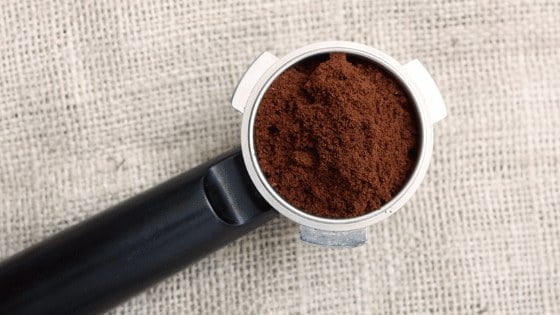
As we all know, coffee grounds can be extremely heavy. Coffee grounds can push up the overall weight and cost of your general waste bins.
We have worked with busy cafes in the past that serve less food than what we typically perceive they serve. We have found their bins to be extremely heavy. In nearly every case, it was down to large amounts of ground coffee. See our recent blog on baby wipes and if they can be recycled.
A smart business will seek ways to recycle coffee grounds to reduce this weight and hence costs. Check out our infographic on how two seemingly identical cafes can pay very different amounts for their waste collections.

Cafe waste management tips: how can we recycle coffee grounds?
As with any organic waste stream such as food waste, your options for recycling coffee grounds is an organic waste bin collection or some form of composting.
Composting has exciting aspects when it comes to recycling coffee grounds.
For info on cafe grease trap pumping services, see here.
An organic food waste bin will take the coffee grounds (and any other food waste) to produce electricity or use it for industrial composting.
We will discuss why using coffee grounds as fertiliser is such a great option.
Why are recycled coffee grounds so good for plants and gardens?
Any organic matter will be good for helping plants to grow. However, coffee grounds can add an extra kick to your garden.
I will admit that my gardening expertise is very limited. So, I will quote from some more expert websites below:
Gardeningknowhow.com tells us that: “Composting coffee grounds helps to add nitrogen to your compost pile.”
“Used coffee grounds for gardening do not end with compost. Many people choose to place coffee grounds straight onto the soil and use it as a fertilizer. The thing to keep in mind is while coffee grounds add nitrogen to your compost, they will not immediately add nitrogen to your soil.”
“Many people feel that coffee grounds lower the pH (or raise the acid level) of soil, which is good for acid-loving plants. But this is only true for unwashed coffee grounds. “Fresh coffee grounds are acidic. Used coffee grounds are neutral.” If you rinse your used coffee grounds, they will have a near-neutral pH of 6.5 and will not affect the acid levels of the soil.”

Sciencedaily.com tells us that: “Coffee grounds can be an excellent addition to a compost pile. The grounds are relatively rich in nitrogen, providing bacteria with the energy they need to turn organic matter into compost. About 2 per cent nitrogen by volume, used coffee grounds can be a safe substitute for nitrogen-rich manure in the compost pile.”
You can also see a more detailed article here.
A good thing to consider
Not all cafe owners will have a large garden or interest at all in gardening.
Some cafes are now bagging their coffee grounds and letting any interested customers simply take them away.
Think about it: you go for a coffee and you take away some free fertiliser for your garden also.
The added benefit for the cafe is that this will hugely reduce their spending on general waste. See our blog on what the density of general waste means.
A comparison infographic tackling cafe waste management
Many of our new customers operate in the cafe and restaurant sector. And, as a new business starting or small business, costs can be a major concern – as well as staying ethical by emphasising environmental awareness.
We produced the infographic below to show some of what can be achieved by implementing a simple recycling and waste management plan.
In an industry as competitive as the cafe and food service sector, especially in big Australian cities (where there is so much competition), having a differentiator like being green is vital. Of course, saving money is also a great benefit I am sure you will agree!

Please copy the code below to share this infographic on your website, including attribution.
<a href="https://waster.com.au"><img style="width:100%;" src="http://waster.com.au/wp-content/uploads/2016/10/Two-cafes-1.jpg"></a><br>Infographic provided by <a href="https://waster.com.au/">Waster</a>
Waste management services for cafes: how two cafes can pay very different costs!
Comparing two identical cafes:
Cafe A is based in Manly, North Sydney and has had the same waste provider for almost 10 years. They put all their garbage in general waste (which goes to landfill) and hence are not performing any recycling.
Waste stats for Cafe A – 12 cubic metres of rubbish per month. 100% dumped in landfill. Cost is $497+GST per month.
Cafe B is identical in every way to Cafe A – except they want to reduce costs and help the environment – and do both if they can. They call Waster – who performs an estimate of their rubbish.
50% recyclables and 50% other waste.

Net steps
Cafe A continues to throw all rubbish out in general waste bins as it is easy. However, costs are higher and every year the levy on landfills increases – continuing increase in costs year after year.
Think smarter
By looking at its waste streams with a critical eye, Cafe B can take advantage of lower costs for recycling and help protect its business against future landfill levy increases.
The business can thus help the planet and hopefully use that for marketing their business.
Simple changes deliver real benefits
Decreasing waste going to landfills helps reduce costs, helps the environment through reduced greenhouse emissions and increases recycling.
Cafe A continues to dispose of all waste in landfills, meaning they cannot take advantage of environmental credentials for marketing their business.
They have 100% of waste in landfills.
Cafe B increases recycling by implementing cardboard recycling and commingled (mixed) recycling for bottles and cans. This reduces waste going to landfill.
Optimise collection schedule and reduce truck visits. This can result in safety and reducing emissions.
They have 49% of waste in landfills, 24% in cardboard collections and 27% in mixed recycling.
The outcome: Cafe A has 0% recycling. If you continue doing the same things you will keep getting the same results. And losing money at the same time.
The monthly cost for Cafe A remains at $497.24+GST per month.
Cafe B hits 51% recycling rate. Cafe B benefits from putting a lot of effort in and now uses its environmental performance as marketing collateral to customers.
The monthly cost for Cafe B was reduced to $402.50+GST per month. This is a 19% cost reduction.
These results are only the beginning for Cafe B; with a bit more effort, recycling can be increased and costs minimised further.
More details
A great source of information for cafe and restaurant operators seeking to reduce their waste spend whilst boosting recycling is the NSW EPA industry fact sheet on cafes and restaurants which you can find here.
The fact sheet has some interesting pieces of info including the following:
“Restaurants and cafés typically produce between 1.7 to 7.3kg of waste for each full-time employee a day. Yet more than half of what is tossed out as rubbish could be recycled.”
“Around one-third of a typical restaurant or café waste bin is filled with paper and cardboard, while another 28 per cent is food. In NSW, food waste formed the second-largest identifiable portion of commercial and industrial waste. Sydney businesses alone disposed of over 300,000 tonnes of food waste in 2008”.
Continuing from above…
“Between June and August 2008, a Department study found that 74 per cent of total food wasted in Sydney was thrown away before it even got to the consumer. This means that your staff could be throwing money in the bin. You can recycle everything from coffee grounds, which can be composted, to cooking oils, which can be converted into products like biofuels.
Paper, cardboard and plastic can all be recycled instead of going to landfill. By putting these materials in the correct bins your business could save money through a reduced waste collection charge, plus you will be helping our environment.”
Check out our blog on wheelie bin services and also recycling bottles and cans using crushing devices.
Waste management services for cafes: simple ways to reduce cost
As shown in the infographic above, by simply putting a little effort into recycling, one cafe was able to significantly reduce costs and increase recycling significantly. Check out how Waster can help you whilst reducing your costs and offering flexible 30-day agreements. If you run a shop, see our blog on retail waste management. Visit our waste shop and arrange your waste services for cafes by pressing the big blue button below:
Remember
Cafes are a business we all know a little bit about, or at least think we do!
It is one of the largest discretionary spends of many Australians: getting their morning latte of long black is something they could not imagine living without!
We have covered some interesting topics relating to cafes in recent blogs such as waste prevention using BYO coffee cups – and saying no to plastic straws.
Many cafes are taking the lead in reducing waste in the first place – rather than seeking to recycle it – and many other business types could learn from them in this regard. They are also looking at innovative food waste solutions from composting to maggots!
Check out the video below on how to have true zero-waste coffee:

Final thoughts
It will not be easy to be a zero-waste cafe. It will be very difficult in the upcoming years due to the sheer amount of plastic used everywhere – often for no good reason.
Also, changing customer behaviour is very tricky. People say one thing but vote for their dollars.
However, it is a worthwhile journey, and banning single-use plastic is almost inevitable in one way or another. It is really good to be ahead of the pack on this! For a similar topic – check out our blog on the benefits of shopping locally.
Leave a Reply Cancel reply

Product categories
Most Popular Posts
-
Commercial Waste Management Services: Reduce Waste Collection Costs! 🚍
-
Medical Waste Disposal: Everything You Need To Find Out In 2024! 💉
-
Rubbish Removal Sydney 2024: Better Bin Collections For Business ✅
-
Clinical Waste Disposal 2024: What To Know About Business Clinical Waste ⚕️
-
Secure Document Destruction 2024: All About Security Bins Shredding 🔒
-
Free Cardboard Recycling 2024: Can I Get Free Cardboard Collection? 📦
-
Confidential Paper Disposal Bins 2024: What You Need To Know About Shredding! 🔒
-
Recycling Bins Australia 2024: Recycling Can Boost Your Profits! ♲
-
Commercial Wheelie Bin Collection: What Businesses Need To Know In 2024 🗑️
-
Commingled Recycling 2024: Why Commingled Bin Is Key To Recycling 🍾


